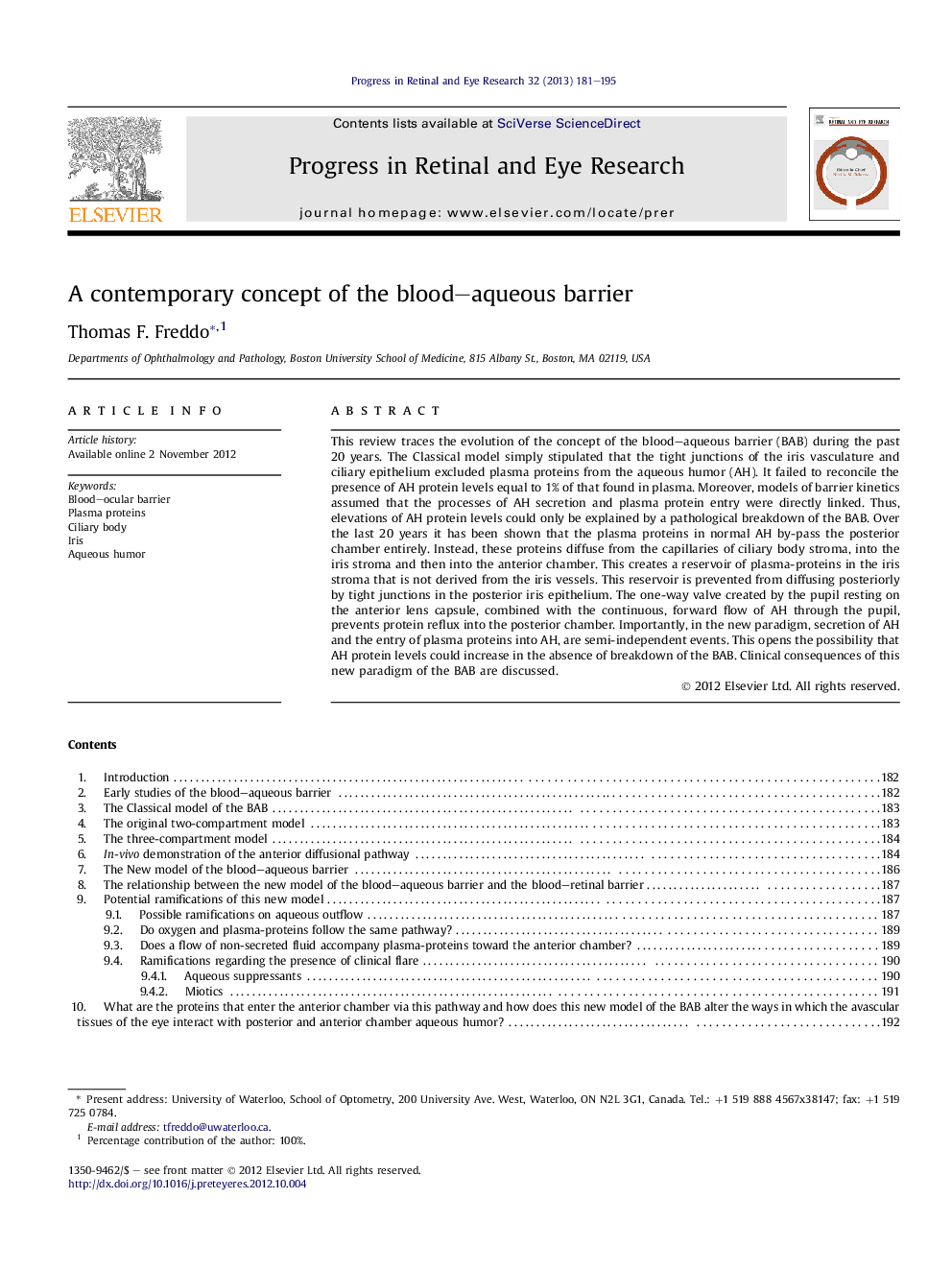| Article ID | Journal | Published Year | Pages | File Type |
|---|---|---|---|---|
| 4031975 | Progress in Retinal and Eye Research | 2013 | 15 Pages |
This review traces the evolution of the concept of the blood–aqueous barrier (BAB) during the past 20 years. The Classical model simply stipulated that the tight junctions of the iris vasculature and ciliary epithelium excluded plasma proteins from the aqueous humor (AH). It failed to reconcile the presence of AH protein levels equal to 1% of that found in plasma. Moreover, models of barrier kinetics assumed that the processes of AH secretion and plasma protein entry were directly linked. Thus, elevations of AH protein levels could only be explained by a pathological breakdown of the BAB. Over the last 20 years it has been shown that the plasma proteins in normal AH by-pass the posterior chamber entirely. Instead, these proteins diffuse from the capillaries of ciliary body stroma, into the iris stroma and then into the anterior chamber. This creates a reservoir of plasma-proteins in the iris stroma that is not derived from the iris vessels. This reservoir is prevented from diffusing posteriorly by tight junctions in the posterior iris epithelium. The one-way valve created by the pupil resting on the anterior lens capsule, combined with the continuous, forward flow of AH through the pupil, prevents protein reflux into the posterior chamber. Importantly, in the new paradigm, secretion of AH and the entry of plasma proteins into AH, are semi-independent events. This opens the possibility that AH protein levels could increase in the absence of breakdown of the BAB. Clinical consequences of this new paradigm of the BAB are discussed.
Graphical abstractA: Classical model -the tight junctions of the non-pigmented ciliary epithelium (•••••) and the iris vascular endothelium are the key elements. Plasma proteins are assumed to be part of aqueous as it is secreted. Elevation of protein concentrations can only be explained by an increase in blood-aqueous barrier permeability. B: New Model - Plasma proteins in aqueous humor diffuse from the ciliary body stroma, to the anterior chamber and outflow pathways (arrows). Protein entry is semi-independent of aqueous production and thus concentration can change within limits, without altering barrier permeability. The anterior and posterior chambers are different environments, with unidirectional aqueous flow and tight junctions of the iris epithelium (•••••) separating them.Figure optionsDownload full-size imageDownload high-quality image (243 K)Download as PowerPoint slideHighlights► The source and route of plasma protein entry into aqueous humor is described. ► The blood–aqueous barrier is not primarily a barrier between blood and aqueous. ► The blood–aqueous barrier separates different environments in front of and behind the iris. ► Not all clinically observable anterior chamber flare is pathological.
